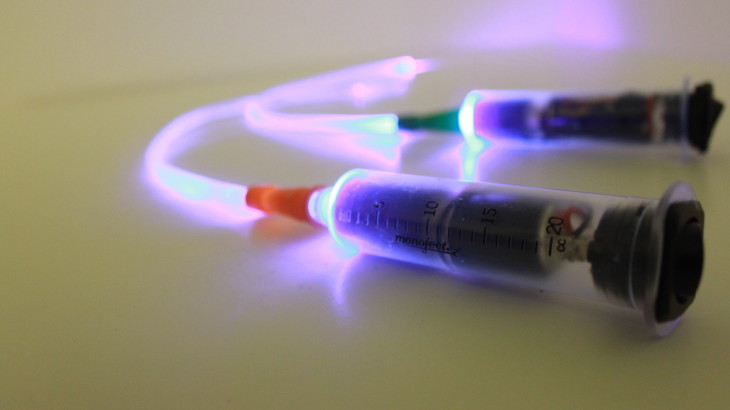Innovation is the life force of the medical device industry. Without a large budget for in-house R&D, licensing or acquiring a new technology, many companies are losing market share to those with deep pockets. To avoid the bureaucracy of a large organization, the “skunkworks” style of innovation has become much more common in recent years. This means that a large portion of the next great medtech innovations will come from small companies. But who is to say who these innovators of the future are today, and how does someone with just an idea hope to ever compete with the big players?
As a medical device startup company, we at Veritas Medical experienced many of the same difficulties as other entrepreneurs and innovators – although our story is also somewhat unique. We began as an interdisciplinary team of students working on degrees in engineering, medicine and business. We met as part of the Bench to Bedside program at the University of Utah. We were given access to physicians and nurses to discuss problems they had seen with modern medicine as well as allowed to be immersed in clinical experiences so we could see other unmet needs first hand. We decided to focus our efforts on preventing hospital-acquired infections, a problem which affects millions of patients and costs the healthcare system billions annually. We developed a novel light therapy technology to kill bacteria and stop these hospital acquired infections. Like many great scientists and engineers before us, we had excellent training in the sciences, but little real world business experience. We had a fantastic idea, great drive and passion, but little experience in knowing how to make this into an actual company.
At this point, we reached the proverbial “Valley of Death.” The National Science Foundation called this the “lull between government funding for research and industry support for prototypes and products.” To get help, we approached the Lassonde Entrepreneur Institute at the University of Utah. Their instrumental mentorship in areas of business and entrepreneurship gave us the support we needed to complete our team. We began to apply for more grants, competitions, and funding opportunities. With the help of the entrepreneurial experts at the Lassonde Institute and the Center for Medical Innovation we were able to raise nearly $100,000 in non-dilutive funding.
While we are still pre-revenue, we have numerous offers from investment groups, manufacturers and distribution experts who are excited to work with us as we continue to develop. Taking a medical device from idea to startup company to an actual in-use device is no easy task, and we have learned several valuable lessons along the way:
- Besides dedication, your team is the most important factor for success. We were able to gather a great interdisciplinary team and invaluable mentoring resources. There will always be someone willing to assist or partner with you. Find them and get to work.
- Apply for every grant, competition or funding opportunity you can find. You may only win a small portion of these grants, but without the funds to continue, the “Valley of Death” will become a frightening reality.
- Follow “The Lean Startup” principles outlined in the Business Model Canvas proposed by Eric Ries and Alex Osterwalder. Some of the most important principles we learned were: make a hypothesis of an idea, validate your idea with actual customers, and pivot based on the feedback. While you may be an expert in your field, there is nothing more valuable than unbiased feedback from a group of your peers who would use your device or technology. The critical moments in a startup business also rely on being able to pivot quickly based on these responses. Another great resource is “Biodesign: The Process of Innovating Medical Technologies.”
- Don’t underestimate the power of a greatly written press release. We were fortunate to have the University of Utah and the Lassonde Institute send out a press release on our behalf, and the results were tremendous. We received countless hits to our website, phone calls and meeting requests.
- Nothing is impossible. In the immortal words of the ancient Greek inventor, engineer, physicist and mathematician Archimedes, “Give me a lever long enough and a fulcrum on which to place it, and I shall move the world.”




Hello – liked your article.
I would imagine that another key aspect of keeping “Lean” during this transitional startup phase would be
the infamous “Outsourcing”. May not need a full time Quality/Regulatory Dept or resources but if you are a MedDev startup at some point will need and require some help.
Therefore – just saying hello and introdcing myself as a seasoned professional that may be able to help out some of these startup / spin offs. I actually serve currently as Director – QA/RA (part time) now for one of these type companies but looking to take on a ittle more work. So if you come across any needs, feel free to pass the connection along. e.g. – cGMPs, Quality System Development – QPs, SOPs, Instructions, FDA Submissions, Regulatory Strategy, ISO Cert., EU/MDD, etc…
I have a profile on Linkedin.
Thanks
Great Article! Loved it!